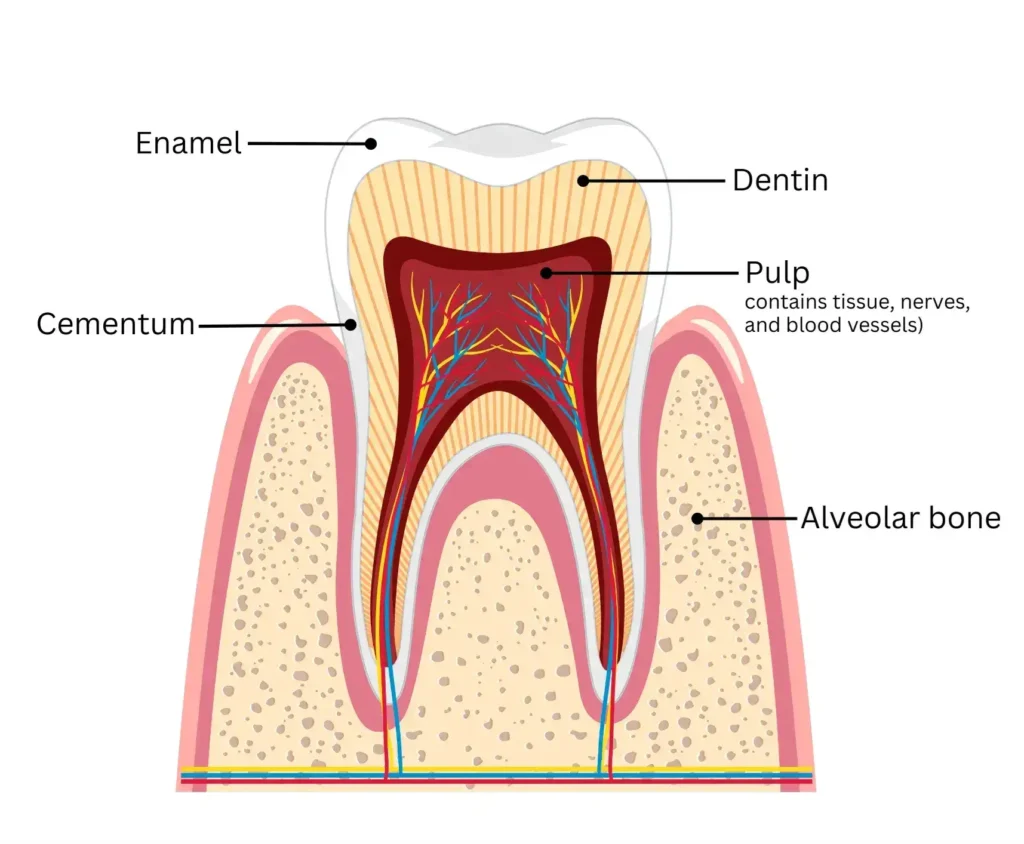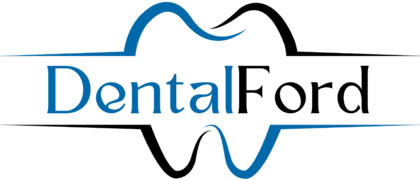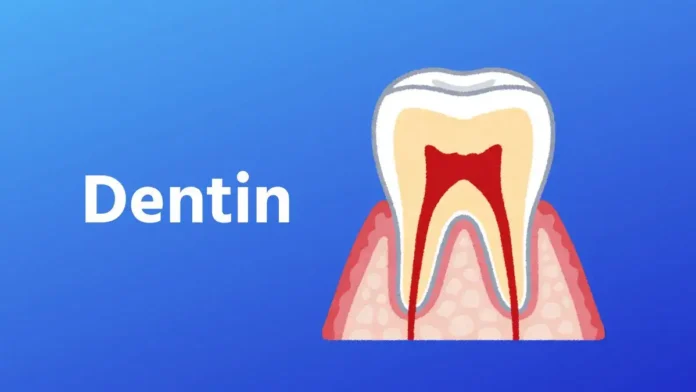What is Dentin/Dentine
Dentin is a hard mineralized tissue that forms a major mass of teeth. It is slightly yellowish and gives a color shade to teeth as enamel is clear or translucent. Teeth are made up of Enamel, Dentine, Cementum, and Pulp; Dentin is covered by the outermost enamel layer on the crown part of the teeth and cementum on the root part. Dentin is approached by enamel on the crown part, cementum on the root part, and the pulp chamber on the inner side. You can see the diagram below to understand the position of dentin/dentine in the teeth.

Structure and Composition of Dentin/Dentine
Odontoblasts form the dentin from the dentinoenamel junction to the pulp; the formation of dentin is called dentinogenesis. Dentin formation is a continuous process throughout life even after teeth are developed. This dentin contains tubules called dentinal tubules. These dentinal tubules extend from the dentinal-enamel junction to the pulp. The peritubular internal wall or lumen of dentinal tubules is highly mineralized.

Dentin is less mineralized tissue compared to enamel. Dentin contains 70% inorganic substances, 20% organic substances, and 10% water. It is softer than enamel but harder than cementum and bone. Let’s see the types of dentin to understand it better.
Types of Dentin/Dentine
- Primary Dentin: Primary Dentin forms before the root completion of the tooth. There are two types of primary dentin; Mantle Dentin, and Circumpulpal Dentin.
A. Mantle Dentin: It is less mineralized dentin and forms in the crown portion of the tooth-supporting enamel. It is just 15-30 μm in thickness. Collagen fibers are made of type III collagen, known as Korff’s fibers.
B. Circumpulpal Dentin: It forms the bulk of dentin. It forms both coronal and radicular dentin. It is more mineralized in comparison to Mantle Dentin. Collagen fibers are made of type I collagen. Intertubular dentin forms the most prominent part of Circumpulpal Dentin.
- Secondary Dentin: Secondary Dentin forms after the root completion of the tooth and tooth eruption and forms throughout life. It is almost similar to primary dentin, but it has more S-shaped dentinal tubules and is more mineralized compared to primary dentin.
- Tertiary Dentin: Tertiary Dentin only forms after tooth eruption in response to mechanical irritation/injury, cavity/tooth decay, or any other trauma. There are two types of Tertiary Dentin: Reactionary Dentin, and Reparative Dentin.
A. Reactionary Dentin: When only the odontoblastic process is injured, the odontoblast deposits tertiary dentin called reactionary dentin.
B. Reparative Dentin: When the odontoblastic process and the whole odontoblast are injured and degenerate, undifferentiated mesenchymal cells differentiate into odontoblasts and then they deposit tertiary dentin called reparative dentin.
Dentin is a tubular structure containing odontoblastic processes and tubular fluid. Whenever dentin is exposed to the environment, it becomes sensitive to hot, cold, sour, and sweet stimuli, which causes dentin hypersensitivity or tooth sensitivity.
Functions of Dentin
Dentin works as a barrier or shield to protect the pulp tissue from microbial and other noxious stimuli. It provides mass to the tooth structure and also supports the enamel against masticatory forces. So, dentin provides mass and strength to the tooth structure and forms a protective tertiary dentin barrier for the protection of the pulp. It also contributes to the bonding of restorative material.
I hope this informative article helps you to understand dentin. Do comment if you have any queries. Share this article with your friends and family to let them know something new.

